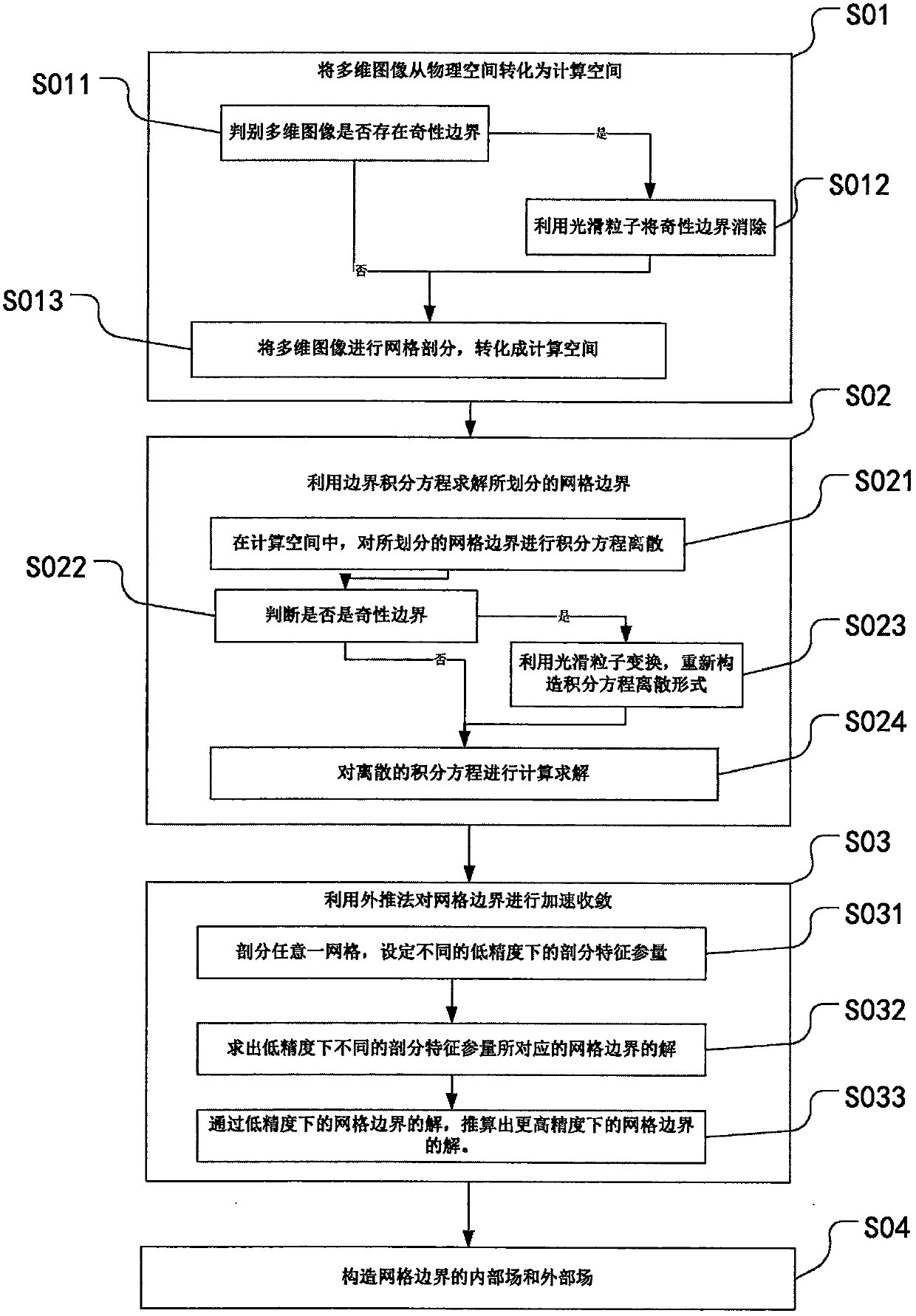A Method of Image Boundary Element Processing
A processing method and boundary element technology, applied in image data processing, instruments, complex mathematical operations, etc., can solve the problems of inability to use extrapolation, machine time consumption, low precision, etc., to improve R&D efficiency and reduce machine time. Time consumption and the effect of improving accuracy
- Summary
- Abstract
- Description
- Claims
- Application Information
AI Technical Summary
Problems solved by technology
Method used
Image
Examples
Embodiment
[0034] Example: such as figure 1 As shown, an image boundary element processing method includes the following steps.
[0035] S01: Transform multi-dimensional images from physical space to computational space.
[0036] Specifically, step S01 includes the following steps.
[0037] S011: Determine whether there is a singularity boundary in the multi-dimensional image, if yes, go to step S012; if not, go to step S013.
[0038] S012: Use smooth particles to eliminate the singularity boundary, go to step S013.
[0039] Further, the step S012 includes the following steps.
[0040] S0121: Select a function class that utilizes smooth particle transformation. This type of function satisfies: at the singular point, the function value is 0; near the singular point, the function value tends to 0; and the derivative is not 0.
[0041] Further, in the step S0121, the function class using smooth particle transformation is the sim function class, one of the double power function classes. ...
PUM
 Login to View More
Login to View More Abstract
Description
Claims
Application Information
 Login to View More
Login to View More - R&D
- Intellectual Property
- Life Sciences
- Materials
- Tech Scout
- Unparalleled Data Quality
- Higher Quality Content
- 60% Fewer Hallucinations
Browse by: Latest US Patents, China's latest patents, Technical Efficacy Thesaurus, Application Domain, Technology Topic, Popular Technical Reports.
© 2025 PatSnap. All rights reserved.Legal|Privacy policy|Modern Slavery Act Transparency Statement|Sitemap|About US| Contact US: help@patsnap.com


